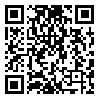Volume 17, Issue 2 (9-2019)
sjsph 2019, 17(2): 197-211 |
Back to browse issues page
Download citation:
BibTeX | RIS | EndNote | Medlars | ProCite | Reference Manager | RefWorks
Send citation to:



BibTeX | RIS | EndNote | Medlars | ProCite | Reference Manager | RefWorks
Send citation to:
Seyedzadeh Sani S M, Abdullahi A R. Prevalence of Traditional and Cyber Bullying Among Teenagers
Herat-Afghanistan. sjsph 2019; 17 (2) :197-211
URL: http://sjsph.tums.ac.ir/article-1-5767-en.html
URL: http://sjsph.tums.ac.ir/article-1-5767-en.html
1- Assistant Professor, Department of Law, Ferdowsi University of Mashhad, Mashhad, Iran , seidzadeh@um.ac.ir
2- Student, Department of Law, Ferdowsi University of Mashhad, Mashhad, Iran
2- Student, Department of Law, Ferdowsi University of Mashhad, Mashhad, Iran
Abstract: (3542 Views)
Background and Aim: Bullying is one of the most common problems among teenagers in many schools around the world, which is recently considered by researchers in the fields of psychology and even criminology as a traditional and cyber bullying.
The purpose of this study is to investigate the rate of traditional and cyber bullying among male and female teenagers in the secondary schools of Herat-Afghanistan three levels;first, second and third ones.
Materials and Methods: This paper was analyzed by quantative method and random sampling which used questionnaire such as bullying ,Punchin,Hindouja,llinios and Aleous questionnaire in Traditional and Cyber by using Spss software.The research sample included 360 students from the first, second and third grades of high schools in the city of Herat.
Results: The results of follow-up tests (Kruskal Wallis and Mann Whitney) with a significant level of less than 0.5 and 0.01 showed that the prevalence of traditional and cyber bullying among female students was higher than male students.On the other hand, there is a significant difference between traditional bullying and social dimension grades of the tenth -eleventh and eleventh-twelfth.The prevalence traditional of bullying in the eleventh grade is less than tenth and twelfth grades.
Conclusion: The results of the research indicate that students whose fathers are farmers are more bullied than other jobs.The results also showed that the prevalence of bullying in students whose mothers are housewives are lower than those students whose mothers are employed. Father's education does not affect student bullying, in addition the results of the study showed that cyber bullying rates are higher among students whose mothers are educated than illiterate mothers.
The purpose of this study is to investigate the rate of traditional and cyber bullying among male and female teenagers in the secondary schools of Herat-Afghanistan three levels;first, second and third ones.
Materials and Methods: This paper was analyzed by quantative method and random sampling which used questionnaire such as bullying ,Punchin,Hindouja,llinios and Aleous questionnaire in Traditional and Cyber by using Spss software.The research sample included 360 students from the first, second and third grades of high schools in the city of Herat.
Results: The results of follow-up tests (Kruskal Wallis and Mann Whitney) with a significant level of less than 0.5 and 0.01 showed that the prevalence of traditional and cyber bullying among female students was higher than male students.On the other hand, there is a significant difference between traditional bullying and social dimension grades of the tenth -eleventh and eleventh-twelfth.The prevalence traditional of bullying in the eleventh grade is less than tenth and twelfth grades.
Conclusion: The results of the research indicate that students whose fathers are farmers are more bullied than other jobs.The results also showed that the prevalence of bullying in students whose mothers are housewives are lower than those students whose mothers are employed. Father's education does not affect student bullying, in addition the results of the study showed that cyber bullying rates are higher among students whose mothers are educated than illiterate mothers.
Keywords: Cyber Bullying Factors, Traditional Bullying Factors, Bullying in Herat, Cyber Bullying, Traditional Bullying
Type of Study: Research |
Subject:
Public Health
Received: 2019/09/21 | Accepted: 2019/09/21 | Published: 2019/09/21
Received: 2019/09/21 | Accepted: 2019/09/21 | Published: 2019/09/21
Send email to the article author
| Rights and permissions | |
 |
This work is licensed under a Creative Commons Attribution-NonCommercial 4.0 International License. |





